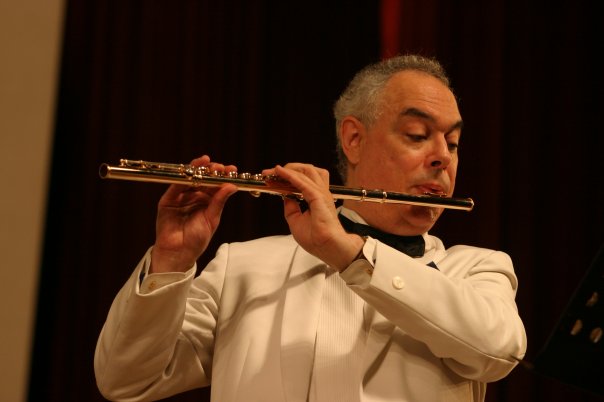Good Practice Habits
by Alan Weiss
Alan Weiss is acclaimed flutist with diverse high-level experience as an orchestra musician, chamber musician, solo performer, university professor, university and music festival administrator, music business, and recording artist. He is currently the co-owner of www.VintageFluteShop.com. Please also visit www.alanweissflute.com.
It is with pleasure that I will be contributing a regular column to TheFluteView.com. I will be discussing a number of flute related topics and also encourage readers to submit topic suggestions and questions.
In light of the current worldwide situation most flutists find themselves in a unique situation. We are ready to perform, but with no concerts on the horizon! Staying in shape for a flutist is imperative. It’s not the quantity of time you practice, but the quality! Practicing is putting money in the bank— merely playing is withdrawing your money. If you practice carefully with thought and accuracy for 30 minutes, it is far for more beneficial then repeating the same mistakes over and over hours on end…!
The most important facets of good flute playing are a beautiful sound, style and musicianship. The second most important factors are exactly the same! Fast playing without good taste and style, rhythmic pulse, control, and variety of textures and nuances is simply boring.
I like to remember outstanding quotes told to me by teachers and musicians who influenced me over the years:
*The late Roger Voisin, principal trumpeter in Boston Symphony Orchestra for many years, once told me, “The best way to stay in shape, is to stay in shape!”
*My most influential flute teacher of the Boston Symphony, the late Phillip Kaplan: “It’s about rhythm, articulation, and singing! Don’t force!”
*James Pappoutsakis from the Boston Symphony was crystal clear to me, “The quality of your tone comes first!”
Expand your “flute view” to other instruments! Being married to a fine oboist, I have read some of the writings of the late Stevens Hewitt of the Philadelphia Orchestra. He wrote some incredible practice techniques for existing methods. Here’s a taste of his sage advice, “One does not eat exclusively, soup for a week, fish for a week, bread for a week. Practice everything.”
You can hear at flute conventions and music school practice rooms flutists playing the same repetitive half-step long tones and mindless finger exercises. Often it sounds like typing-- very mechanical. Have you actually analyzed what you are doing?
My rules for a good practice session: Set goals, use a metronome, and a tuner.
Divide your work into sections.
These are my personal favorites:
1. Exercises for sound: Moyse methods: Tone Development Through Interpretation, Daily Exercises, De la Sonorite, 20 Exercises and Studies. Make sure you practice wide intervals, keeping your core sound and intonation especially on crescendo and diminuendi. Hear the note and the interval before you play it! Your embouchure needs to be strong and flexible.
2. Daily Exercises: Taffanel Gaubert Complete Method. Explore the entire method book, as it contains lots of great etudes and reminders of the basics.
3. Articulation: Soussmann Exercises, part 3. This method is well known but this is a great anthology to improve and sustain all varieties of tonguing.
Do NOT just play through your music. Construct a system so you actually work and improve. Just “playing” though a particular exercise without breaking it down slowly is meaningless. If you keep repeating your mistakes you will never improve. When you master it slowly, fast will be easy, light, clean, and controlled.
Sometimes practicing just one note to make it beautiful, in tune, keeping the core sound, with a variety nuances and dynamics is an excellent workout.
I divide my practice into sections:
1. Daily exercises and scales
2. Etudes and Orchestral Excerpts
3. Solo and Chamber Music literature
Strive for critical thinking, precision, expression, and musical growth. When you work on your long tones, scales, exercises, and solos listen to yourself critically and you become your own best teacher!
Playing as loud and fast as possible while gesticulating doesn’t mean you are musical, tasteful, or expressive. Control is the goal. Construct your line, phrase, breaths with musical understanding and sensitivity appropriate to the composer, harmony. Believe it or not, your flute playing is not always the solo, so learn how to blend and even be subordinate to the other parts. For ensemble music, learn the entire score not just your own part!
